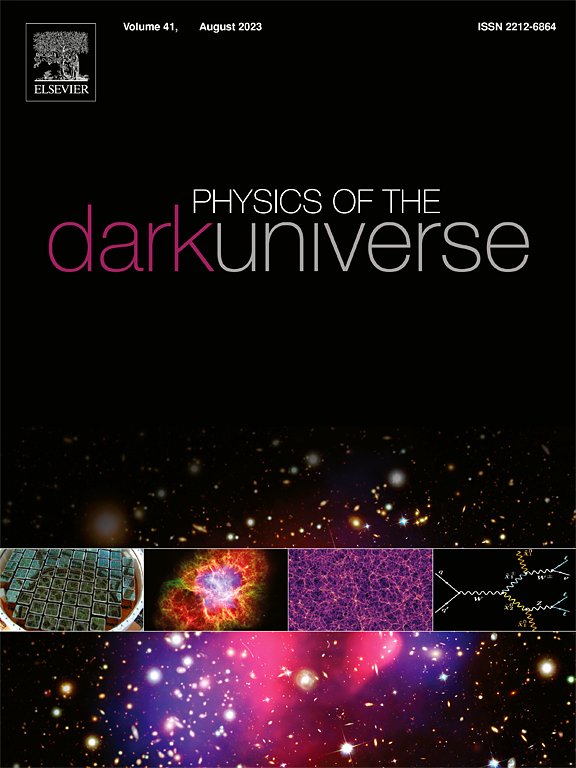Circular motion of test particles, trajectories and QPOs around the non-rotating black hole in the background of the Symmergent gravity
IF 5
2区 物理与天体物理
Q1 ASTRONOMY & ASTROPHYSICS
引用次数: 0
Abstract
We explore the circular motion of test particles around the non-rotating black hole in the background of the Symmergent gravity, focusing on how the parameters of the underlying model influence particle motion. The black hole is fully characterized by four parameters, namely, the mass of the black hole, the charge of the black hole, and two parameters and , with () corresponding to Ads (ds) spacetime. We derive the analytical solution of the energy and angular momentum of test particles as a function of parameters of the underlying model and discuss the stability of circular orbits through an effective potential approach. The innermost stable circular orbits and the effective force exerted on particles are examined. By numerical integration of the equations of motion, we plot the trajectories to investigate the motion of particles orbiting the black hole. Furthermore, we study the epicyclic oscillation of test particles that encircle the black hole near the equatorial plane and derive analytical equations for radial, orbital, and latitudinal frequencies as a function of the parameters of the model. The frequency of periastron precession of particles has also been discussed. Lastly, we consider the collision of particles near the event horizon and examine the center of mass-energy. Our findings reveal that the model parameters influence the motion of the test particles.
求助全文
约1分钟内获得全文
求助全文
来源期刊

Physics of the Dark Universe
ASTRONOMY & ASTROPHYSICS-
CiteScore
9.60
自引率
7.30%
发文量
118
审稿时长
61 days
期刊介绍:
Physics of the Dark Universe is an innovative online-only journal that offers rapid publication of peer-reviewed, original research articles considered of high scientific impact.
The journal is focused on the understanding of Dark Matter, Dark Energy, Early Universe, gravitational waves and neutrinos, covering all theoretical, experimental and phenomenological aspects.
 求助内容:
求助内容: 应助结果提醒方式:
应助结果提醒方式:


